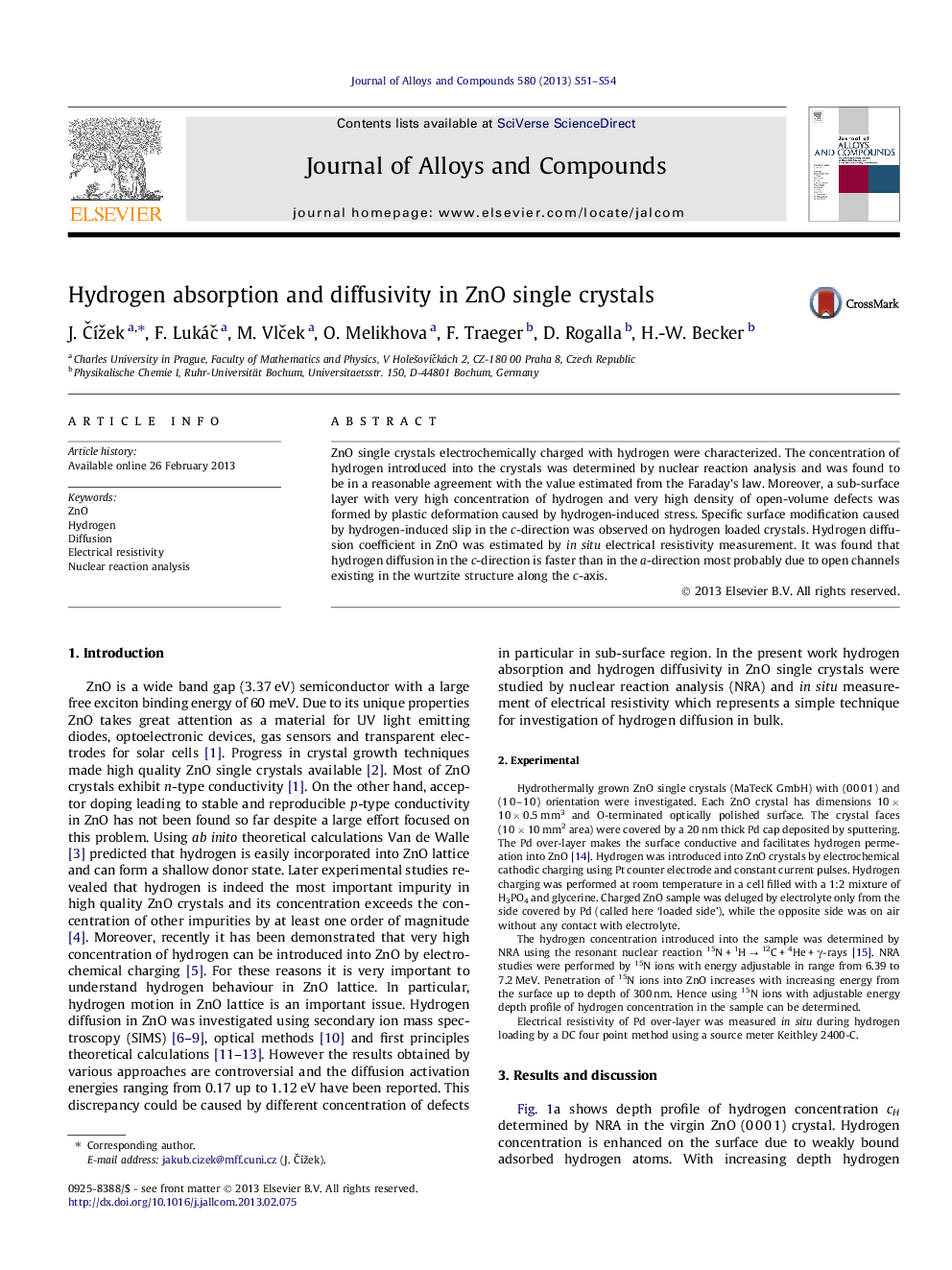| Article ID | Journal | Published Year | Pages | File Type |
|---|---|---|---|---|
| 1613362 | Journal of Alloys and Compounds | 2013 | 4 Pages |
ZnO single crystals electrochemically charged with hydrogen were characterized. The concentration of hydrogen introduced into the crystals was determined by nuclear reaction analysis and was found to be in a reasonable agreement with the value estimated from the Faraday’s law. Moreover, a sub-surface layer with very high concentration of hydrogen and very high density of open-volume defects was formed by plastic deformation caused by hydrogen-induced stress. Specific surface modification caused by hydrogen-induced slip in the c-direction was observed on hydrogen loaded crystals. Hydrogen diffusion coefficient in ZnO was estimated by in situ electrical resistivity measurement. It was found that hydrogen diffusion in the c-direction is faster than in the a-direction most probably due to open channels existing in the wurtzite structure along the c-axis.
► Hydrothermally grown ZnO crystals were electrochemically doped with hydrogen. ► Depth profile of hydrogen concentration introduced into the crystal was determined. ► Hydrogen loading created sub-surface region with high hydrogen concentration. ► Hydrogen-induced plastic deformation causes specific surface modification. ► Hydrogen diffusion in ZnO is faster in the c-direction than in the a-direction.
